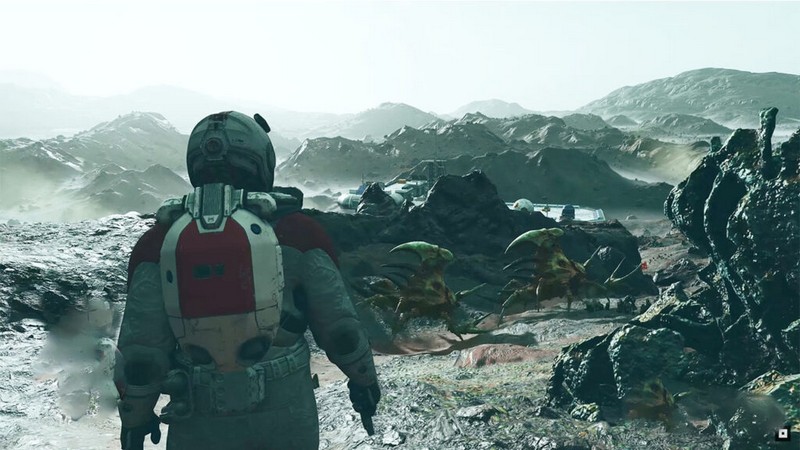Many conspiracy theories are spread in the gaming world. They sound absurd but are very convincing.
Polybius – Government experiments
In 1981, the arcade shooting game “Polybius” appeared in an arcade in the suburbs of Oregon (USA) and quickly became a hot name at that time. The image of many people lining up around an arcade machine waiting for their turn to play the game is not uncommon.

However, after a while, many players reported that prolonged exposure to Polybius caused them to have seizures, insomnia, fear, and show signs of violence, even wanting to commit suicide. In the podcast “The Polybius Conspiracy” broadcast by Radiotopia in 2017, producers said they interviewed Bobby Feldstein – who claimed to have been kidnapped one afternoon when he was 14 years old. after playing the game at Coin Kingdom. Feldstein said someone led him through a series of underground tunnels, then was found the next day more than 60 miles from home in the middle of Tillamook State Forest. Feldstein said there was another boy with him who also saved him.
After quite a few thrilling stories, many people believe that Polybius is essentially a government-run psychology experiment program, with neurological effects and incredibly addictive gameplay. Game consoles placed publicly in gaming zones are rumored to be periodically visited by men in black suits to collect and mine data. Polybius was used by the United States government as a tool to test people’s mental and physical health, thereby providing an information base for recruiting soldiers. Others say that side effects of the game such as causing epilepsy or brain aneurysm may be being tested by the CIA as a way to brainwash.
There is no concrete evidence for these speculations, however the surrounding legends and stories persist, capturing the imagination of the public, especially conspiracy theorists.
Madden NFL – “Madden Curse”
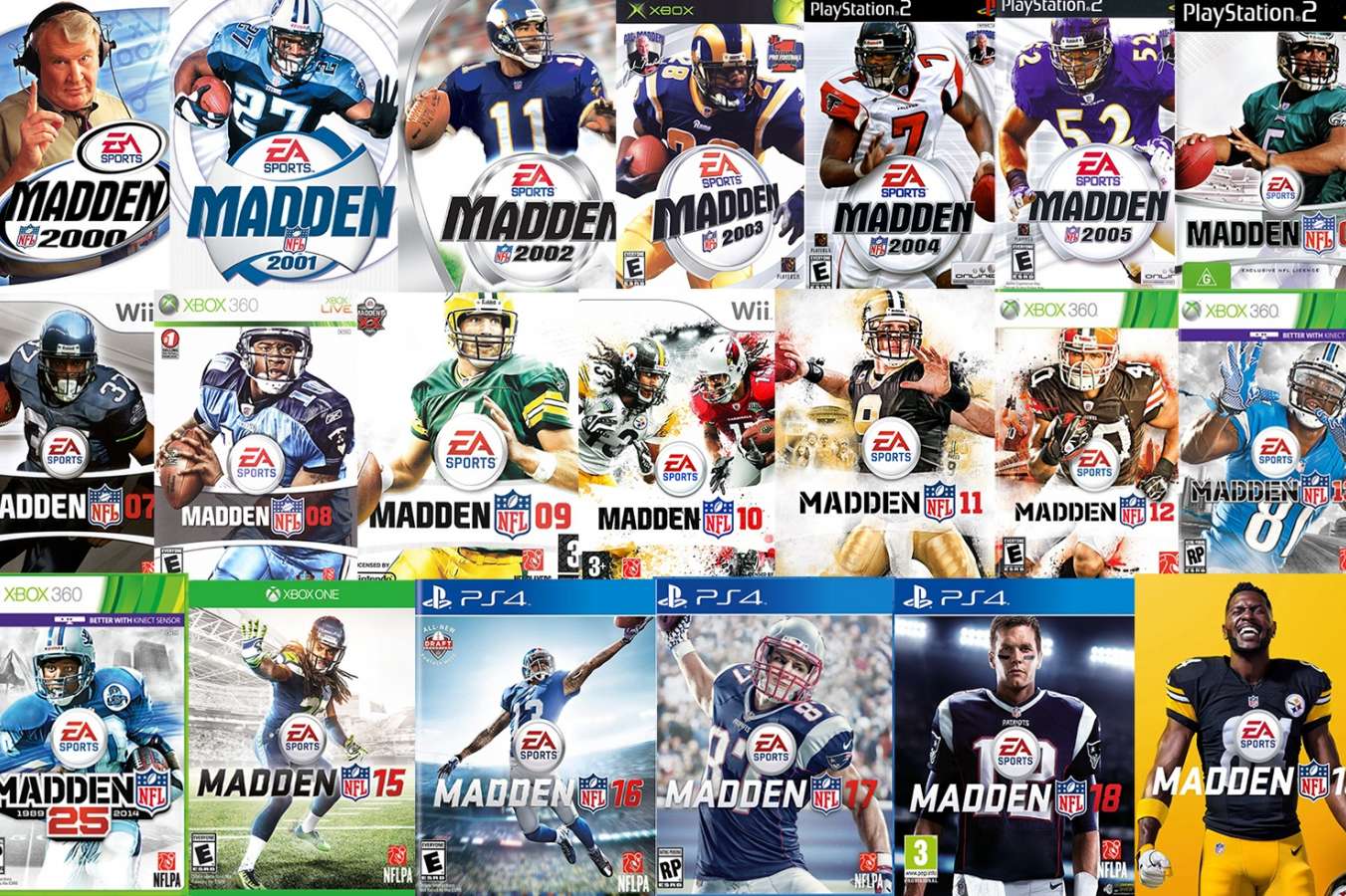
If you are a sports fan, you have probably heard of “Madden Curse”. People notice that every player who appears on the cover of an NFL game every year has something bad happen to them – bad luck, a loss of form or perhaps a serious injury. EA itself has denied the curse, but the puzzling coincidences cannot help but make us ask questions. Let’s take a look at the fate of all of Madden’s cover athletes since 1999.
1999: Garrison Hearst
Before Madden 99, John Madden was still the cover character of the game, this curse did not affect him, so the timeline counted from after this event. Garrison Hearst from the San Francisco 49ers okay EA Sports chose to represent Madden 99. The glory didn’t last long, he broke his ankle in a playoff match. This injury was so severe that Garrison Hearst had to miss the following two seasons.
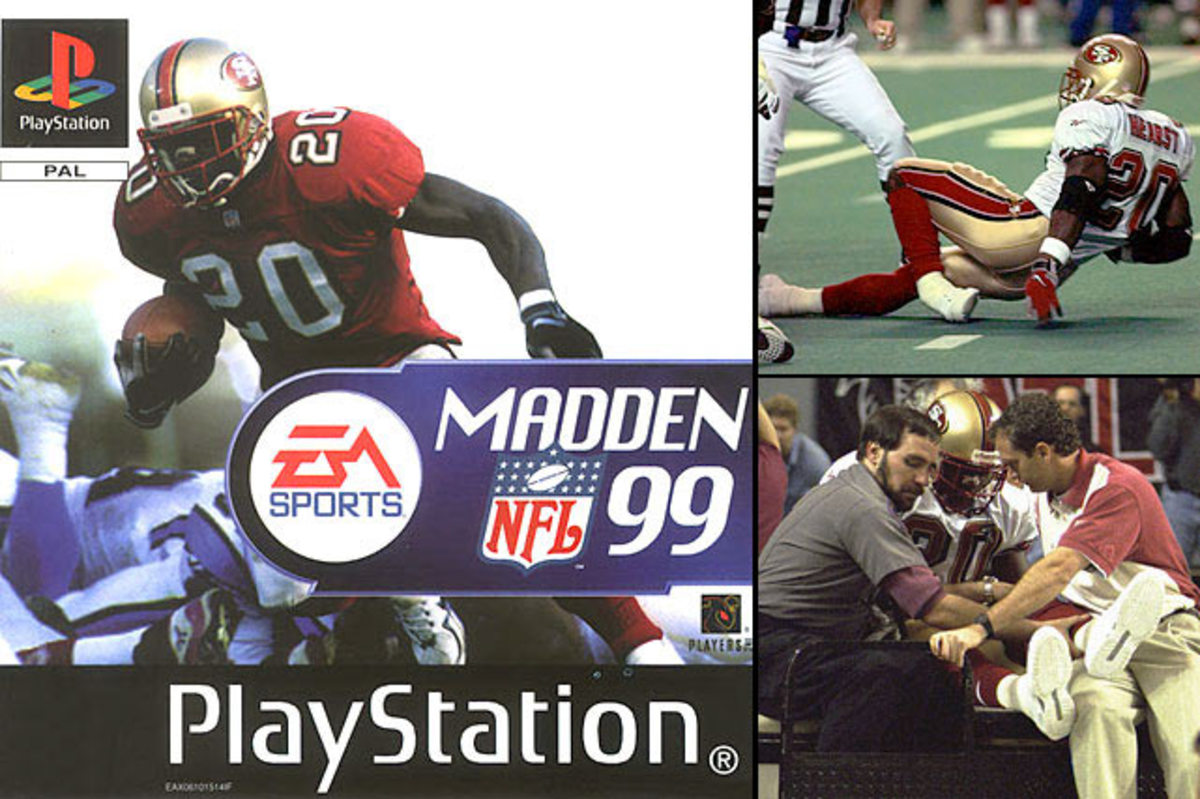
2000: Barry Sanders and Dorsey Levens
You’re probably wondering, has Barry Sanders ever appeared on the cover of Madden? The truth is that Sanders should have been chosen to represent Madden 2000, but before that he made a very sudden decision: to retire. Dorsey Levens was the replacement and then suffered a knee injury.
2001: Eddie George
Eddie George was chosen as the cover character for Madden 2001 after a season of excellent performance. He was probably the best midfielder at that time as he possessed incredible speed and strength. George was never injured or had any problems during the season, but in the playoffs, he lost to the Ravens with an interception. The following season, George was injured and his career went downhill from there.
2002: Daunte Culpepper
Daunte Culpepper and Randy Moss were once a pair with top-notch combinations. Culpepper’s career was on the rise, but fate arranged for him to become Madden’s representative. Culpepper started the season with a losing record of 4-7, then suffered a knee injury towards the end of the season.
2003: Marshall Faulk
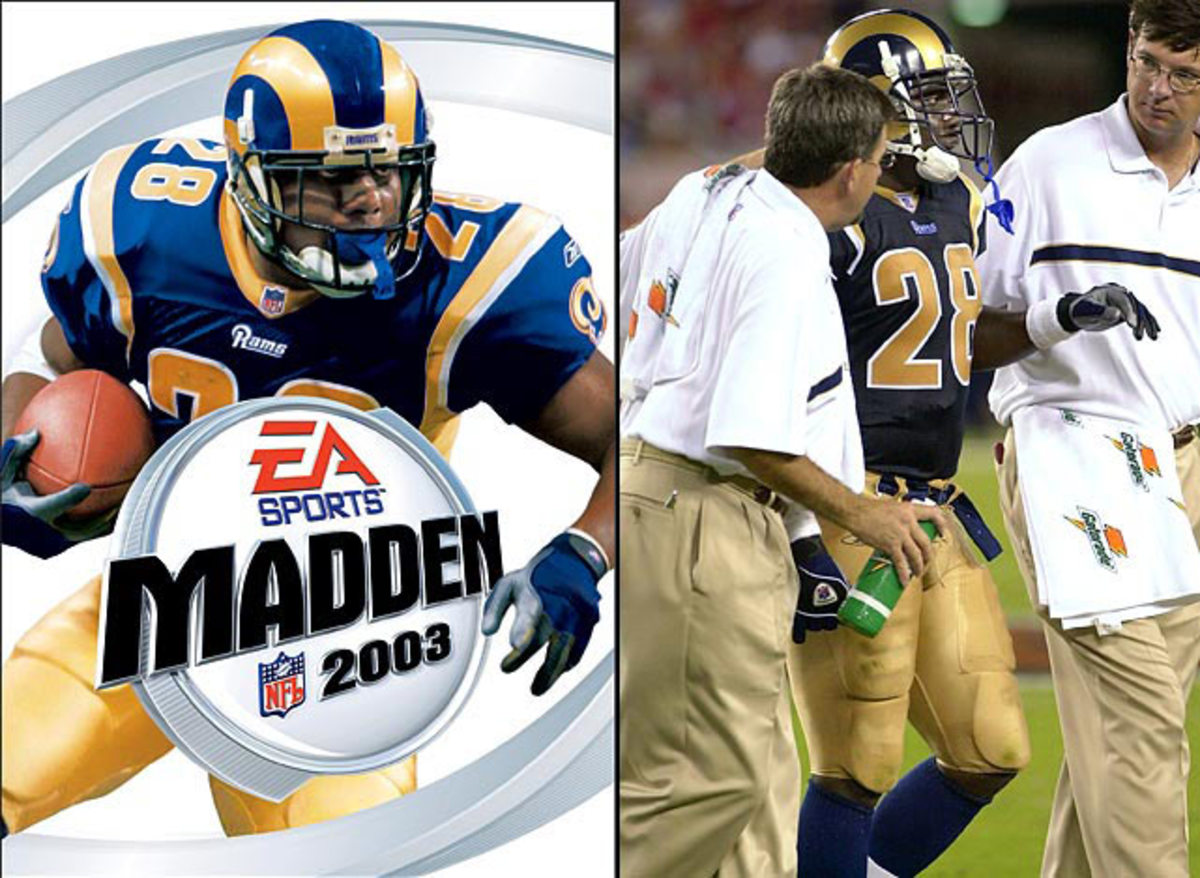
In 2003, Marshall Faulk became the cover star of Madden. That season, he suffered an ankle injury – something that prevented him from being on the field full-time. Faulk stayed for a few more seasons with poor performances until his retirement.
2004: Michael Vick
After being on the cover of Madden 2004, Vick suffered a broken fibula and missed 11 games that season. In 2007, he was charged with illegally operating a dog arena, which severely affected his career.
2005: Ray Lewis
Ray Lewis used to terrify opposing quarterbacks with his skills and he was chosen as the cover face of Madden 2005. That season, he broke his wrist and the next season, a thigh injury. causing him to miss 10 matches.
2006: Donovan McNabb
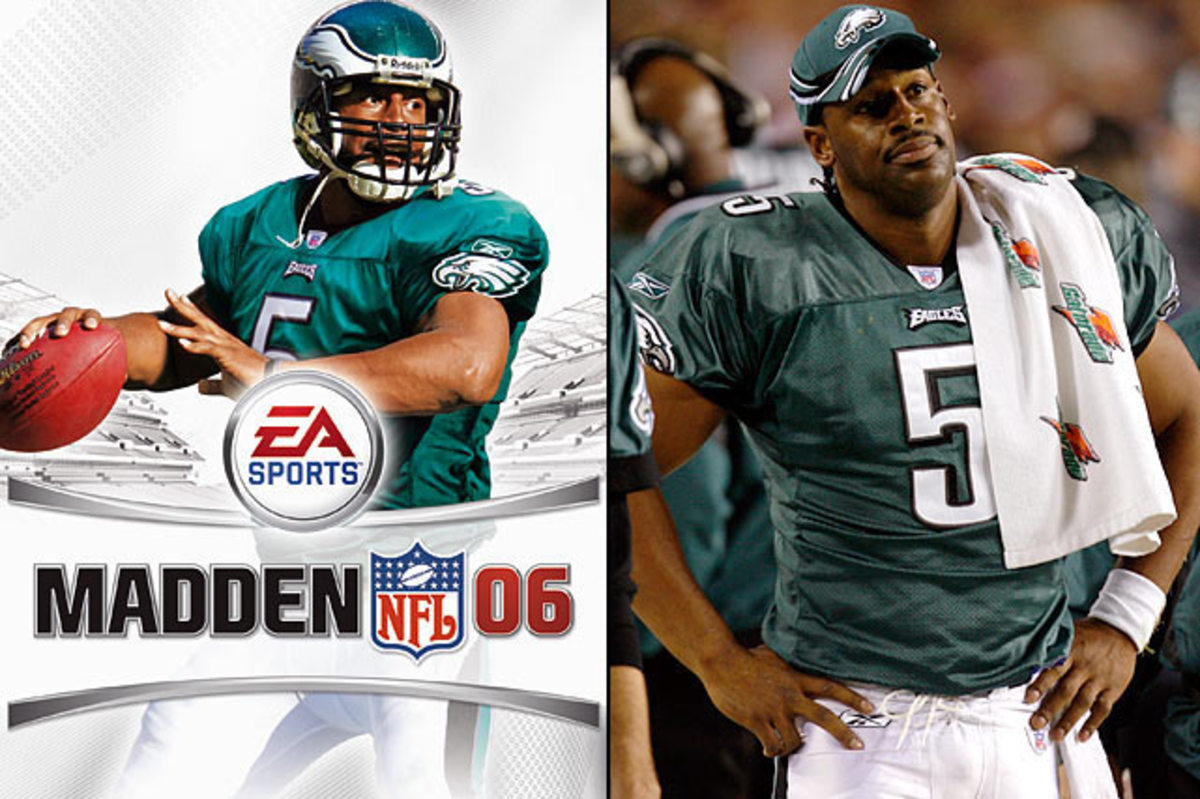
Donovan McNabb was one of the top midfielders when he was in his prime. However, in the first game of the season after becoming a representative of Madden 2006, he had to limp off the field due to a sports hernia. McNabb missed seven games and had a public feud with teammate Terrell Owens.
2007: Shaun Alexander
Shaun Alexander had a successful season in 2005, breaking the record for passing touchdowns in a season. The curse continued to work when Alexander broke a bone in his foot and missed six games after becoming the cover character of Madden. After the injury, because he could not recover, he was soon eliminated from the tournament because of his poor performance.
2008: Vince Young
After becoming the representative character for Madden 08, Young was injured and had to miss 1 game that season. Not stopping yet, Young showed signs of wanting to commit suicide and was forced to leave the Titans because his teammates did not respect him.
2009: Brett Favre
At that time, Brett Favre was planning to retire, but EA Sports seemed to be aware that appearing on the cover would bring some misfortune, so they decided to choose the old, about-to-retire Brett Favre to see if he could break his promise. cursed or not. Favre did not retire after that, but had to play with an injured bicep for a long time and his performance was not outstanding.
2010: Troy Polamalu and Larry Fitzgerald
EA Sports continues its efforts to break the crazy curse by putting two people on the cover, but the bad luck seems to keep recurring. Polamalu only played 5 games because of a knee injury, Fitzgerald then also suffered a rib injury.
2011: Drew Brees
Brees had quite a successful season, taking the New Orleans Saints to the playoffs and staying injury-free. But here, the Saints lost to the Seahawks 7-9, a disappointing defeat.
2012: Peyton Hillis
During the season he became the cover story, he missed more than half of the games due to injury.
2013: Calvin Johnson
Calvin Johnson was the rare guy who didn’t have any problems during the season the year he was on the cover, but he made the decision to retire relatively early a few years later.
2014: Adrian Peterson
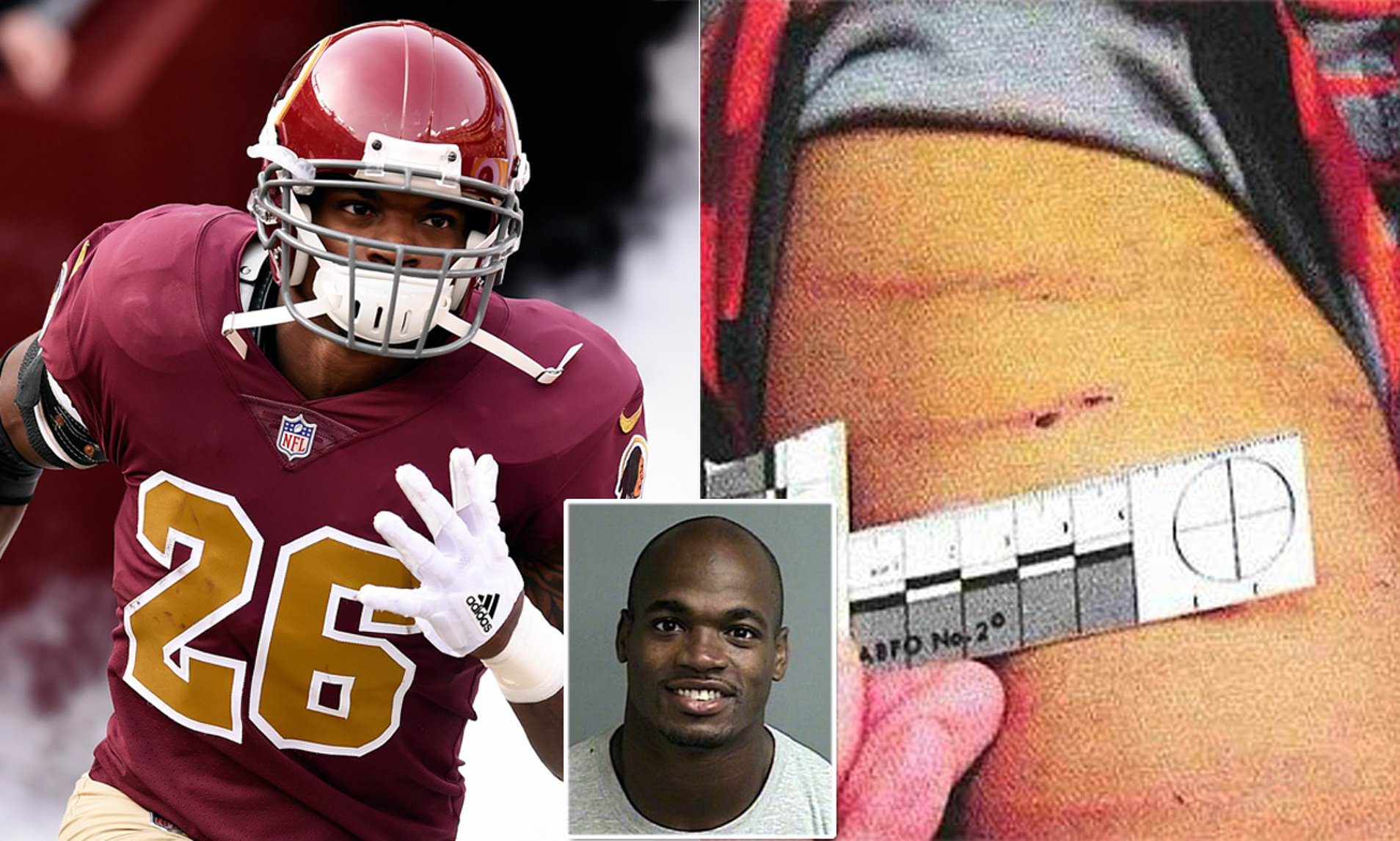
This star was convicted of injuring his biological son in May 2014. Not long after that, he continued to be entangled in accusations with another of his children.
2015: Richard Sherman
During that season, Richard Sherman still performed quite well, but the following season, he had to undergo Tommy John surgery due to a torn ligament in his left elbow.
2016: Odell Beckham Jr.
The 2015 season was a success for Odell, but not without a few setbacks. Odell was suspended from one game after getting into multiple fights with Josh Norman of the Carolina Panthers.
2017: Rob Gronkowski
That season, he missed the first four games due to a hamstring injury, then continued to suffer from disc herniation and other injuries.
2019: Antonio Brown
Amid discord within the Steelers, Antonio Brown transferred to the Raiders after the season. However, he only played 16 more games in the NFL, rotating to 3 different teams amid a series of controversies on and off the field.
The years we don’t talk about are the years where representative players seem lucky to not have the curse fulfilled. However, looking at the ratio of affected players, “Madden Curse” is still truly something that makes fans feel apprehensive every time their idol is “chosen for gold.”
Playstation – Conspiracy of mass destruction
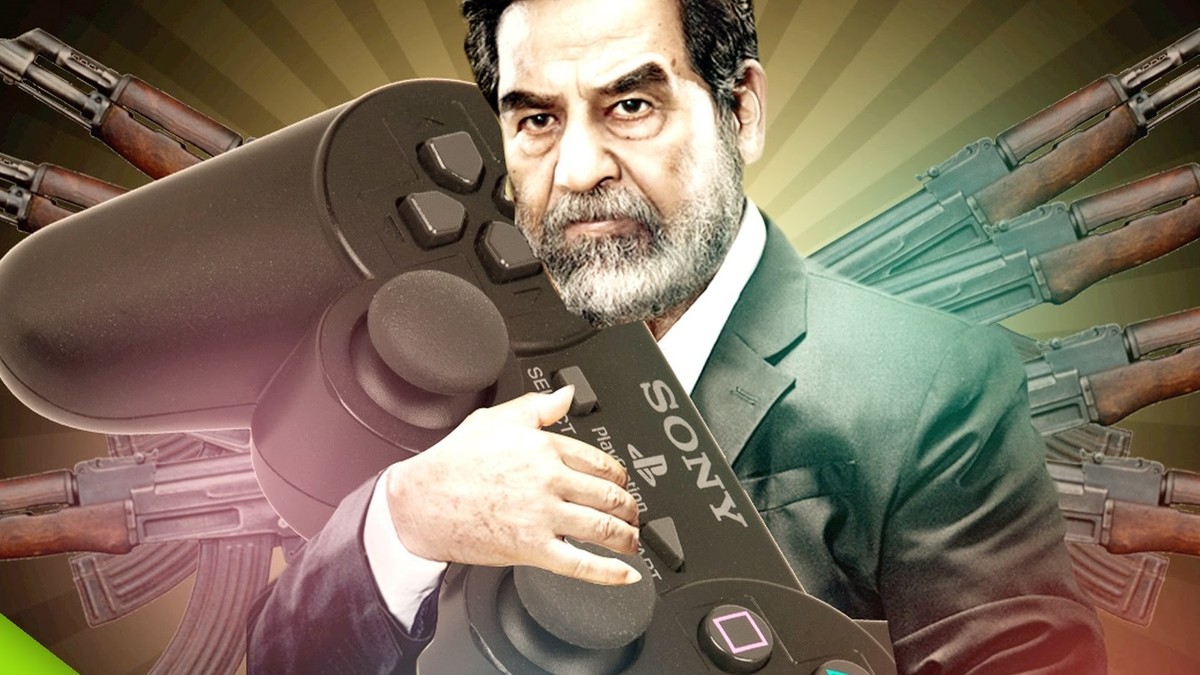
In the early 2000s, a since-deleted World Net Daily report said that Iraqi President Saddam Hussein and the country’s military purchased about 4,000 Playstation 2 game consoles for the purpose of building military supercomputers. However, there is actually no evidence that these PS2 were shipped to Iraq. Furthermore, as the information site Wired analyzed: If Saddam really intended to secretly create destructive weapons, he would probably use existing hardware instead of going through the trouble of combining components. from thousands of PS2s.
According to Eurogamer, this seems to be Sony’s marketing plot rather than dangerous military intelligence information. Although in the end there was no plot of destruction here, at that time, this report received the attention of many agencies.
(There’s more)











